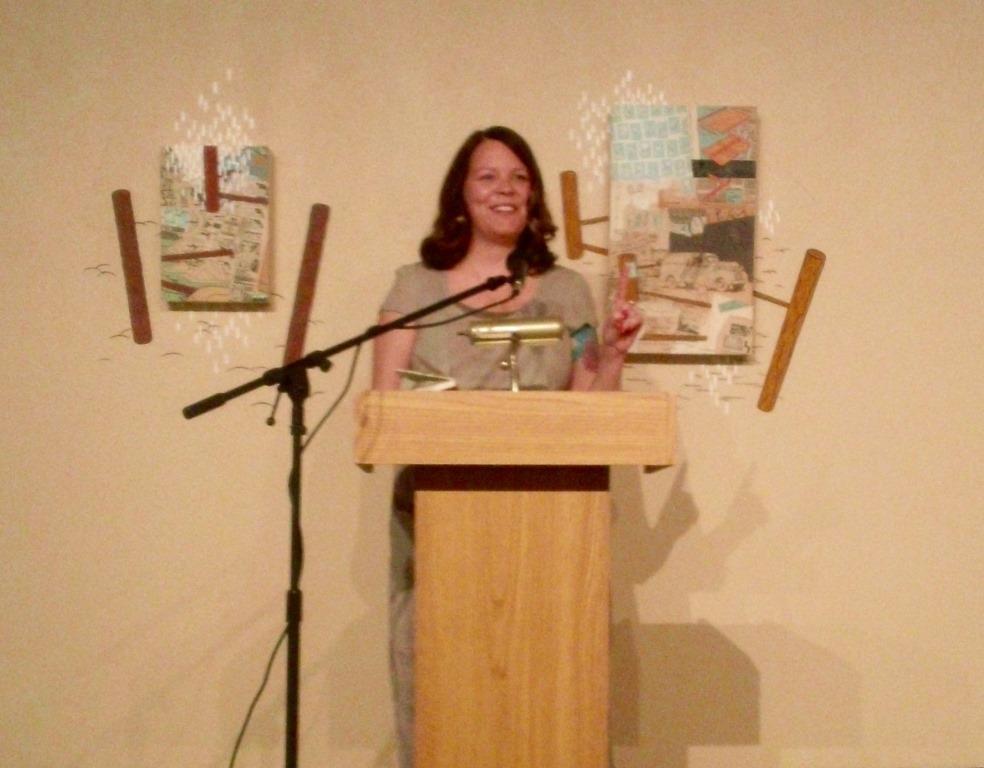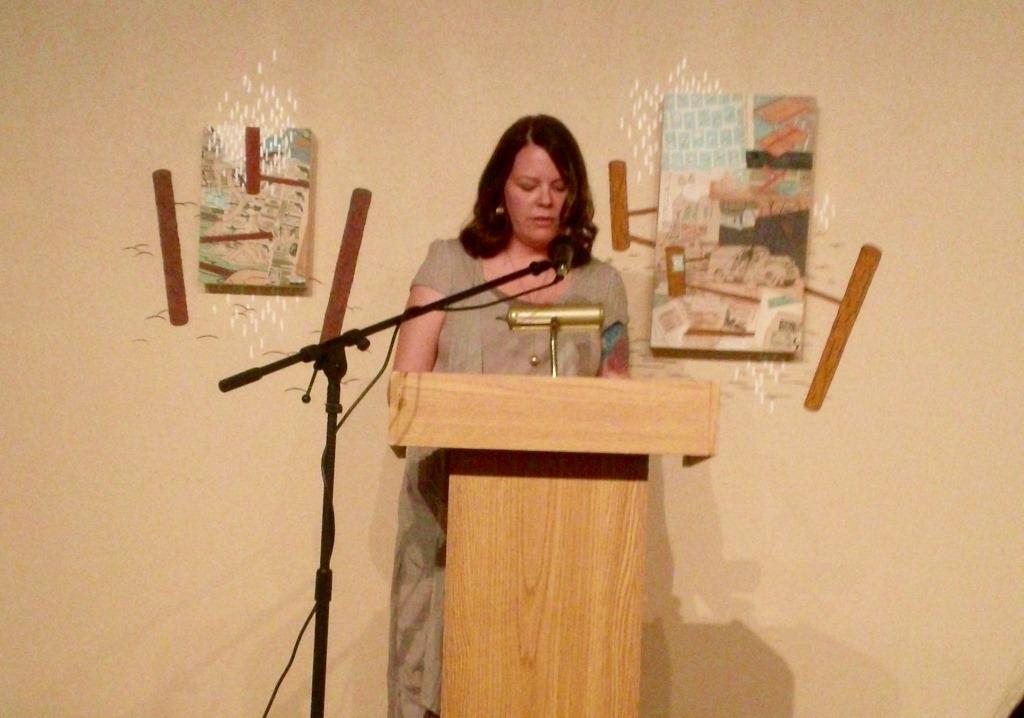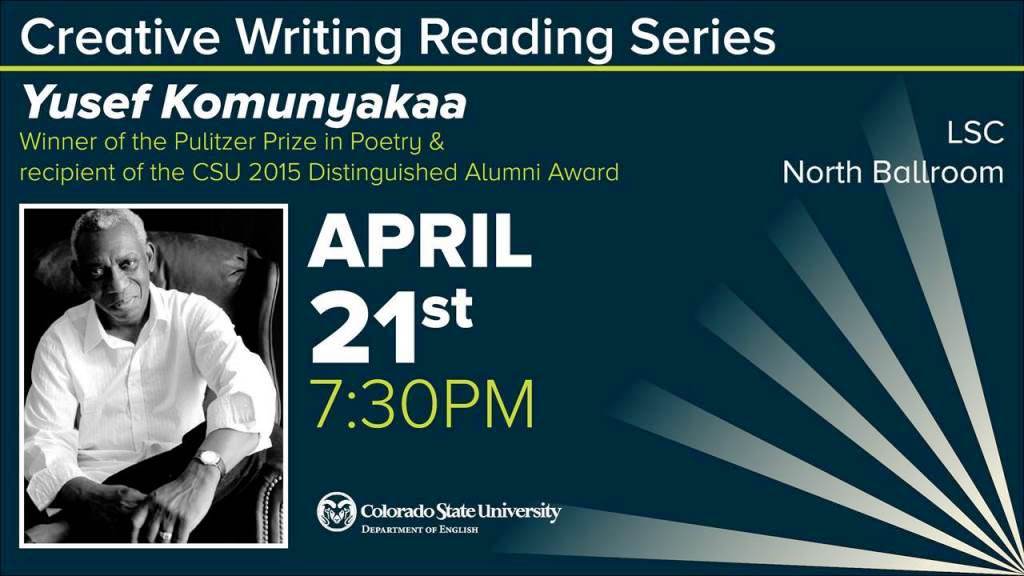
At once both warmly familiar and strangely terrifying, Selah Saterstrom’s writing took what I felt to be a comforting ritual and turned it on its head. Reinvigorating what I knew as literature and as reading, Saterstrom injected an electrifying pulse of stark realism, dark humor, and disturbing imagery into the Creative Writing and Reading Series.
The Hatton Gallery, as usual, filled with the amiable voices of friends and colleagues, and Saterstrom began by thanking the department for the wonderful pot luck dinner with a congenial southern drawl. Welcoming and intimate amongst cohorts, the reading fell in line with all the others I had attended so far.
“So to answer your question, Barbara Walters, dogs do make me think about death.” Imagined interviews with American broadcast journalists, a southern town not flooded but completely leveled by Hurricane Katrina, and dogs that accidentally maul rather than save their companions, Saterstrom’s novel Slab was not what I was expecting. Described in the introduction as a a fallen biblical landscape, protagonist Tiger transforms atop the slabs of buildings that lie across her town like sheets of paper, tombstones, and alters. The concrete pieces that cover the landscape after her town is devastated by the infamous hurricane allow for reverenced musings on murderous dogs, cake recipes, and first kisses. Injected with sharp comedy and jokes that produce a near prickly smile on my face, Tiger tells us tidbits like, “If a southern bride serves red velvet cake at a wedding, it is considered a slutty thing to do.” Punctuated with moments of jarring irony, and constantly jumping from story to story, listeners can never quite place their footing in this world both destroyed and energized by Katrina.
Saterstrom then read to us from a book of lyric essays – Ideal Suggestions – to be released in October. Her first time presenting excepts from her new book, she explained that each piece contains either a forward or an afterward about the origins of her work. The essay she read us, “Tale of Brother and Sister,” meditates on how a piece of writing can be haunted.
And the piece felt truly haunted. With terrifying imagery but beautiful words, the brother and sister discuss with calm a constantly shifting, immaterial scene of horror. “Some things have no shape,” the sister says. The essay, too, has an intangible shape, floating specterly from descriptions of fire and burning to dark and damp, starlets and pomegranate seeds to apparitions of dead bodies. Lines like, “People with gray eyes belong to dog medicine” and “Return the speck to the wet and tender stem” filled me with a definitive chill, as if unable to get out of a cold bath. Caught up in the disturbing visions alternating between blood and mold, Saterstrom’s writing felt arresting in its attention. One could drown trying to gulp down the fast, gorgeous rhythm of her words.
In the Afterward of the essay, Saterstrom explained she wanted to capture the textures, atmospheres, and syntactical paradigms of two narratives: one of her stillborn son, Trevor, the other of her deceased twin brother. Haunted and guided by these stories, the piece has been in progress for decades as she left and returned to it to incorporate new layers of meaning and voice.
The evening ended with some Q&A, where Saterstrom offered poignant advice on the selection of time and genre for a piece. She views “writing as a zone to entertain the transformation of shadows,” and humbly offered up that, “the urgency to make the work trumps my need to know what the hell I’m doing. Listen to what the project needs.”
Instead of leaving humored or pensive, as I usually do, I felt gutted and hollow after the last reading. But it was intensely refreshing to have listened to something unsettling. The Creative Writing and Reading Series does not just welcome the English Department; it welcomes the power of literature in all its forms, apt to make you feel, as it were, something deep, or something raw.
The Creative Writing Reading Series at CSU is organized by English Department faculty and the Organization of Graduate Student Writers (OGSW); Creative Writing faculty serve on a rotating basis as director of the series and faculty advisor to OGSW. The series has a small annual budget and relies on the support of the Associated Students of Colorado State University (ASCSU), the College of Liberal Arts dean’s office, donors, local businesses, and CSU’s English Department. Its spring 2016 events are made possible with support from CSU’s Lilla B. Morgan Memorial Endowment, a premier funder of the arts at CSU. Please help grow this fund with a gift at: http://president.colostate.edu/lillabmorgan/index.aspx. All events are free and open to the public.
Next reading: Yusef Komunyakaa, Thursday April 21. 7:30 pm – 9:00 pm in the North Ballroom of the Lory Student Center.


